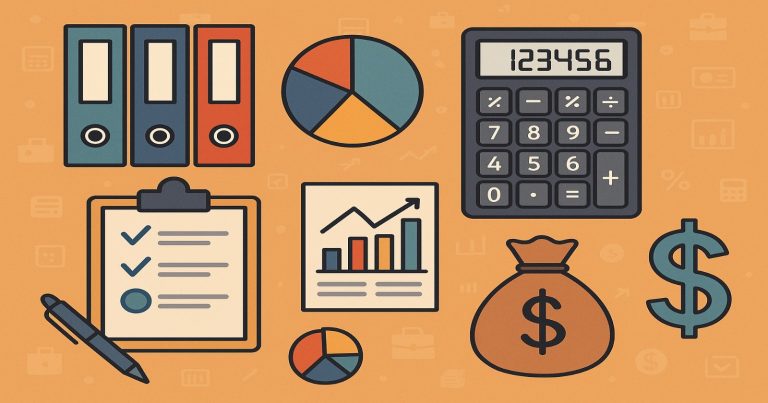General
Unveiling the Future of Transparent Lending: A Deep Dive into TraceLoans

In an era where financial transactions are increasingly digitized, the demand for transparency and accountability in lending practices has never been more pressing. TraceLoans, a pioneering initiative, is emerging as a beacon of hope for borrowers and lenders alike, promising to revolutionize the way we perceive and interact with loans.
Understanding the Need for Traceability
The traditional lending landscape is often shrouded in ambiguity. Borrowers, particularly those with less-than-perfect credit histories, can find themselves at the mercy of predatory lenders who may charge exorbitant interest rates and engage in questionable practices. Similarly, lenders face the risk of default, making it crucial to have a reliable system to assess the creditworthiness of borrowers.
TraceLoans aims to address these challenges by introducing a novel approach to lending that leverages the power of blockchain technology. By recording loan transactions on a decentralized, immutable ledger, TraceLoans ensures transparency, security, and efficiency in the lending process.
Key Features of TraceLoans
-
Transparency and Trust:
- Immutable Records: Every loan transaction, from origination to repayment, is recorded on the blockchain, making it tamper-proof and verifiable.
- Real-time Tracking: Borrowers and lenders can monitor the status of their loans in real-time, fostering trust and accountability.
- Reduced Fraud: The decentralized nature of the blockchain makes it difficult for fraudulent activities to go undetected.
-
Smart Contracts and Automation:
- Automated Processes: Smart contracts can automate various aspects of the lending process, such as loan origination, disbursement, and repayment, reducing paperwork and human error.
- Enforced Terms: The terms and conditions of a loan are encoded into the smart contract, ensuring that both parties adhere to the agreed-upon terms.
-
Enhanced Security:
- Cryptographic Security: Blockchain technology employs advanced cryptographic techniques to protect sensitive financial information.
- Reduced Cyber Threats: The decentralized nature of the blockchain makes it less susceptible to cyberattacks.
-
Financial Inclusion:
- Access to Credit: TraceLoans can empower underserved populations by providing them with access to fair and affordable credit.
- Simplified Onboarding: The streamlined process facilitated by blockchain technology can make it easier for borrowers to apply for loans.
The Impact of TraceLoans on the Lending Industry
The potential impact of TraceLoans on the lending industry is far-reaching. By fostering trust, transparency, and efficiency, TraceLoans can:
- Empower Borrowers: Give borrowers greater control over their financial lives by providing them with clear information and fair terms.
- Protect Lenders: Reduce the risk of default and fraud by ensuring that borrowers are creditworthy and adhere to the terms of the loan.
- Promote Financial Inclusion: Expand access to credit for underserved populations, driving economic growth and development.
- Innovate Financial Services: Pave the way for new and innovative financial products and services that leverage the power of blockchain technology.
Challenges and Considerations
While TraceLoans holds immense promise, it is not without its challenges. Some of the key challenges that need to be addressed include:
- Regulatory Hurdles: The regulatory landscape for blockchain-based financial services is still evolving, and policymakers need to create clear and supportive regulations.
- Technical Complexity: Implementing blockchain technology requires specialized knowledge and expertise.
- Scalability: As the number of users and transactions grows, the blockchain network needs to be able to scale efficiently.
- User Education: Educating borrowers and lenders about the benefits and complexities of blockchain technology is crucial for widespread adoption.
The Road Ahead
Despite these challenges, TraceLoans represents a significant step forward in the evolution of the lending industry. By embracing transparency, security, and automation, TraceLoans has the potential to reshape the way we borrow and lend money. As the technology continues to mature and regulatory frameworks are established, we can expect to see a proliferation of innovative financial solutions that leverage the power of blockchain.
In conclusion, TraceLoans is more than just a technological innovation; it is a catalyst for change in the financial industry. By addressing the long-standing issues of trust, transparency, and accessibility, TraceLoans has the potential to empower individuals and businesses alike, ushering in a new era of financial empowerment.
Conclusion
TraceLoans stands at the forefront of a financial revolution, promising a future where lending is transparent, secure, and accessible to all. By harnessing the power of blockchain technology, TraceLoans aims to dismantle the barriers that have traditionally hindered financial inclusion.
As we move forward, it is imperative to address the challenges and uncertainties associated with this innovative approach. By fostering collaboration between regulators, technologists, and financial institutions, we can unlock the full potential of TraceLoans and create a more equitable and prosperous financial landscape.
The journey towards a future powered by TraceLoans is just beginning. By embracing this transformative technology, we can build a financial system that is not only efficient but also ethical, empowering individuals and communities worldwide.
General
CMA Course Details: Subjects and Their Relevance in Digital Finance and Analytics

The CMA full form is Certified Management Accountant. It is a professional qualification awarded by the Institute of Management Accountants. The course is designed for people who want to move into roles where accounting knowledge is combined with financial analysis, planning, and decision making. Companies run their finance functions through digital systems and rely on reports built from analytics, and the CMA program includes subjects that match these requirements.
CMA Full Form and Course Structure
The CMA full form is Certified Management Accountant. The course has two parts. Part One covers financial planning, performance measurement, cost management, internal controls, and the use of technology in finance. Part Two addresses corporate finance, decision analysis, risk management, investment appraisal, and ethics.
This division is deliberate. Part One builds a base in measuring, monitoring, and interpreting financial and operational data. Part Two applies that base in decisions about funding, investments, and risk. Together the subjects prepare professionals for finance roles where digital platforms and analytics shape every decision.
Part One Subjects
Financial Planning, Performance, and Analytics
It trains candidates to set budgets, review performance against plans, and forecast outcomes. Digital finance systems such as SAP and Oracle automate data collection, but interpretation still requires professional skill. A CMA candidate trained in this area knows how to read reports, compare actual results against benchmarks, and test assumptions with scenario analysis. Analytics platforms support rolling forecasts and trend tracking, and this subject trains professionals to use them correctly.
Cost Management
Cost management in the CMA course includes activity-based costing, marginal costing, and variance analysis. In digital finance, ERP systems collect cost data at each stage of production or service delivery. Analytics turns this data into cost trends, but the professional must decide whether deviations come from supplier pricing, process inefficiencies, or demand fluctuations. CMA training ensures cost information is not read in isolation but linked to real business drivers.
Internal Controls and Technology
Controls safeguard accuracy, prevent fraud, and maintain compliance. Traditional methods relied on manual approval chains. Today, financial systems include embedded controls that trigger alerts when anomalies appear. The CMA subject material prepares candidates to design, evaluate, and monitor these controls. It also covers the use of technology in analytics, where large data volumes must be validated before inclusion in decision reports. Professionals who master this subject can supervise system-driven monitoring while applying judgment on flagged exceptions.
Part Two Subjects
Corporate Finance
Corporate finance covers working capital, capital structure, cost of capital, and investment decisions. Digital tools now allow instant modeling of debt and equity scenarios. CMA professionals learn to read these outputs, check the assumptions behind them, and link capital choices with both shareholder goals and risk over time. The subject combines the use of financial formulas with the ability to apply them in data-driven environments.
Decision Analysis
Decision analysis covers forecasting, probability, regression, and sensitivity testing. While software can process these calculations quickly, the quality of the outcome depends on how reliable the inputs are. A regression model may show that sales are linked to one main factor, but it is the finance professional who checks whether the data sample is valid and whether the conclusion holds in real business conditions. This subject trains candidates to take statistical results and turn them into decisions that management can use with confidence.
Risk Management
Risk management in the CMA program covers identification, measurement, and mitigation of credit, market, and operational risks. Digital finance adds predictive monitoring, where systems track transactions continuously. Professionals must know how to respond when an early-warning indicator signals default risk or market volatility. The subject trains candidates to measure exposure, test hedging strategies, and design response plans that integrate with analytics tools.
Investment Decisions and Ethics
The appraisal applies tools such as NPV, IRR, and payback period to judge whether a project adds value. Software can process these calculations across many scenarios, but the decision is not about the numbers alone. A professional must compare each result with the company’s cash flow position, funding cost, and risk limits. Ethics is part of this work because assumptions in a model can be adjusted to produce results that look better than reality. CMA training reinforces the need to present outcomes as they are, without manipulating inputs, so management decisions rest on accurate evaluations.
CMA Course Details in Practice with Digital Finance
CMA certification leads to positions such as business controller, corporate finance manager, financial analyst, and management accountant. Each of these jobs now depends on working directly with analytics platforms. A financial analyst tracks revenue patterns through Power BI or similar tools. A business controller works with cost and margin data generated by ERP systems. CMA training develops the ability to question those figures, verify the assumptions behind them, and prepare reports that show the actual financial position rather than passing on system outputs without review.
This integration shows why the CMA is valued in analytics-heavy roles. The program does not replace accounting with technology. It trains professionals to use accounting and analytical reasoning together.
Career Roles for CMA Professionals in Analytics
Careers after CMA certification include business controller, financial analyst, management accountant, and corporate finance manager. Each role uses analytics software daily. Revenue patterns are monitored by analysts in Power BI, and controllers study ERP reports to manage expenses. The course prepares candidates to handle these systems responsibly, test the data, and present conclusions that management can trust. Employers want candidates who understand accounting and can also work with data. CMA course details show that the program is built to deliver both.
Final Thought
CMA course details show how the program develops finance professionals for roles where accounting knowledge and analytics capability are equally required. Each subject, whether cost management, corporate finance, or decision analysis, connects with tasks finance teams perform daily on digital platforms. For learners who want preparation that builds clarity in both exam content and application, Zell Education offers structured CMA training with practice aligned to real corporate tasks.
General
How to Monetize a Facebook Page (10 Proven Methods)

With over 3 billion monthly active users, Facebook remains one of the best platforms to make money online. Whether you have a small niche page or a large following, this guide will show you 10 realistic ways to monetize your Facebook page—even if you’re just starting!
Why Monetize a Facebook Page?
✔ Passive income potential (Earn while you sleep!)
✔ Low startup cost (No need for a website)
✔ Multiple revenue streams (Ads, sponsorships, digital products)
✔ Works for any niche (Fitness, business, parenting, etc.)
1. Facebook Ad Breaks (Earn from Video Ads)
💰 Earnings: 3–20 per 1,000 views (Based on audience location)
Requirements:
-
10,000+ followers
-
600,000+ total minutes viewed in last 60 days
-
Follow Facebook’s monetization policies
How to Start:
-
Go to Creator Studio > Monetization
-
Enable Ad Breaks on eligible videos
-
Post engaging videos (5+ mins works best)
Best for: Pages with high video engagement (e.g., viral clips, tutorials).
2. Affiliate Marketing (Promote Products for Commissions)
💰 Earnings: 100–10,000+/month (Depends on conversions)
Top Affiliate Programs:
-
Amazon Associates (4-10% commission)
-
ClickBank (High-ticket digital products)
-
ShareASale (Fashion, tech, home goods)
How to Start:
-
Join affiliate networks
-
Share honest reviews & discount codes
-
Track clicks with Bitly or Pretty Links
Best for: Pages in finance, tech, beauty, or fitness.
3. Sponsored Posts (Paid Brand Deals)
💰 Earnings: 50–5,000 per post (Based on followers)
How to Get Sponsors:
-
Pitch brands via email/DM
-
Join influencer platforms (AspireIQ, Upfluence)
-
Post media kit (rates + audience stats)
Example: A 50k-page can charge 200–500 per sponsored post.
Best for: Pages with high engagement (5%+).
4. Sell Digital Products (Ebooks, Templates, Courses)
💰 Earnings: 500–50,000+/month (Scales easily)
Best-Selling Digital Products:
-
Printable Planners (Etsy, Gumroad)
-
Online Courses (Teachable, Kajabi)
-
Canva Templates (Social media designs)
How to Start:
-
Use Canva + ChatGPT to create products
-
Sell via Facebook Shops or Gumroad
-
Promote with Facebook Live & Stories
Best for: Pages in business, design, or self-improvement.
5. Facebook Subscriptions (Exclusive Paid Content)
💰 Earnings: 5–50 per subscriber/month
How It Works:
-
Fans pay for VIP posts, live Q&A, or private groups
-
Facebook takes 30% cut (vs. 0% on Patreon)
How to Start:
-
Enable Subscriptions in Creator Studio
-
Offer bonus content (e.g., tutorials, early access)
Best for: Pages with loyal followers (e.g., fitness coaches, artists).
6. Dropshipping (Sell Products Without Inventory)
💰 Earnings: 1,000–100,000+/month
How It Works:
-
Partner with AliExpress or Spocket
-
Promote products via Facebook posts & ads
-
Customers buy → Supplier ships → You profit!
Best for: Pages in fashion, gadgets, or home decor.
7. Offer Services (Freelancing via Facebook)
💰 Earnings: 500–20,000/month
Top Services to Offer:
-
Social Media Management
-
Graphic Design (Canva templates)
-
Chatbot Setup (ManyChat, Chatfuel)
How to Start:
-
Post “Hire Me” service ads
-
Use Facebook’s “Services” feature
Best for: Pages with business-savvy audiences.
8. Facebook Stars (Tips from Live Streams)
💰 Earnings: 0.01perStar(1Star=0.01)
How It Works:
-
Fans send Stars during live streams
-
Cash out at $100+ balance
Requirements:
-
1,000+ followers
-
Eligible country
Best for: Gamers, entertainers, or educators.
9. Print-on-Demand (Sell Custom Merchandise)
💰 Earnings: 10–50 profit per item
Top Platforms:
-
Printful (T-shirts, mugs)
-
Redbubble (Stickers, phone cases)
How to Start:
-
Design niche-specific quotes/graphics
-
Promote via Facebook Shops
Best for: Pages with fanbases (memes, quotes, fandoms).
10. Paid Facebook Group (Membership Site)
💰 Earnings: 10–100/month per member
How It Works:
-
Offer exclusive content, coaching, or networking
-
Charge via Stripe, PayPal, or Facebook Subscriptions
Example: A “Digital Marketing Secrets” group could charge $20/month.
Best for: Pages in coaching, finance, or hobbies.
BONUS: Quick Monetization Tips
✔ Post consistently (3-5x/week)
✔ Engage with comments (Boosts reach)
✔ Use Facebook Insights (Track best-performing content)
✔ Repurpose content (Turn posts into Reels, Stories)
Which Method is Best for You?
| Method | Earnings Potential | Best For |
|---|---|---|
| Ad Breaks | 3–20 per 1k views | Viral video pages |
| Affiliate Marketing | 100–10k/month | Review pages |
| Sponsored Posts | 50–5k/post | High-engagement pages |
| Digital Products | 500–50k/month | Business/niche pages |
Final Step-by-Step Plan
-
Pick 1-2 methods (Start simple!)
-
Optimize your page (Professional bio, call-to-action)
-
Track results (Use Facebook Analytics)
-
Scale up (Reinvest profits into ads/products)
🚀 Pro Tip: Combine affiliate links + sponsored posts for maximum earnings!
General
AAA 2025 Ends on a High Note; Cearvol Sets New Trends in Hearing Innovation

The 2025 AAA Conference wrapped up successfully, with Cearvol taking center stage by unveiling groundbreaking innovations. The company’s flagship Diamond X1 intelligent hearing amplifier and its latest premium model, Wave, captivated attendees, reinforcing Cearvol’s prominence in the global hearing technology market.
Highlights from Industry Experts
During the conference, Cearvol drew significant attention from international distributors, notably from Mexico and South Korea. A distributor from Mexico commented, “The advanced capabilities of Diamond X1 offer huge market potential in Mexico, and we’re eager to pursue future partnerships.” Similarly, a distributor from South Korea remarked, “Cearvol’s innovative products align exceptionally well with consumer expectations in Korea. We’re excited about bringing their offerings to our customers.”
Visitors to Cearvol’s booth enthusiastically praised both the Diamond X1 and the new Wave model. A California-based hearing specialist said, “Diamond X1 provides exceptional versatility, allowing users to experience rich, lifelike sound. Meanwhile, Wave sets a new standard with its superior audio processing and intelligent features, significantly improving the lives of those with hearing challenges.”
Advancements in Technology and Academic Impact
Cearvol showcased the Diamond X1’s “Smart Environment Adaptation” and Wave’s “High-Precision Sound Recognition and Processing” technologies, highlighting their potential to automatically optimize hearing experiences across various acoustic environments. Vincent, Cearvol’s Vice President and Head of Brand R&D, emphasized, “Our goal goes beyond just creating hearing devices. We’re committed to enhancing users’ quality of life and social interactions through meaningful technological advances.”
Both Diamond X1 and Wave received widespread acclaim from academic attendees for their innovative contributions and significant social and academic impact within the hearing technology community. Besides, they are excellent choices for those looking for affordable Bluetooth hearing aids. Cearvol is committed to providing high-quality solutions that enhance everyday life while remaining budget-friendly.
Looking Forward: Strategic Academic and Industry Initiatives

Cearvol plans to further intensify research efforts in intelligent hearing adaptation technologies, increasing its focus on artificial intelligence and advanced sound perception algorithms. This approach is designed to deliver the best OTC hearing aids, combining efficiency, precision, and ease of use. Additionally, Cearvol will participate in the upcoming European Hearing Expo (EUHA), showcasing its newest research outcomes and fostering collaborative industry relationships.
Vincent added, “Our mission is to positively transform lives through innovative sound perception technologies. We’ll continue combining rigorous research with profound human-centric care to drive meaningful progress in hearing technology.”
Closing Remarks
Cearvol expresses heartfelt gratitude to all academic leaders, industry partners, and visitors who attended AAA 2025. The brand remains dedicated to professionalism, innovation, and ongoing contributions to hearing health, shaping a brighter future in hearing technology.
Discover more about Cearvol:
Official website: https: www.cearvol.com/
Instagram: @Cearvol
Facebook: @Cearvol
YouTube: Cearvol
-

 Fashion8 years ago
Fashion8 years agoThese ’90s fashion trends are making a comeback in 2017
-

 Entertainment8 years ago
Entertainment8 years agoThe final 6 ‘Game of Thrones’ episodes might feel like a full season
-

 Business8 years ago
Business8 years agoThe 9 worst mistakes you can ever make at work
-

 Fashion8 years ago
Fashion8 years agoAccording to Dior Couture, this taboo fashion accessory is back
-

 Business8 years ago
Business8 years agoUber and Lyft are finally available in all of New York State
-

 Entertainment8 years ago
Entertainment8 years agoThe old and New Edition cast comes together to perform
-

 General2 years ago
General2 years agoCowordl: A Collaborative Twist on the Word Puzzle Craze
-

 Entertainment8 years ago
Entertainment8 years agoDisney’s live-action Aladdin finally finds its stars



